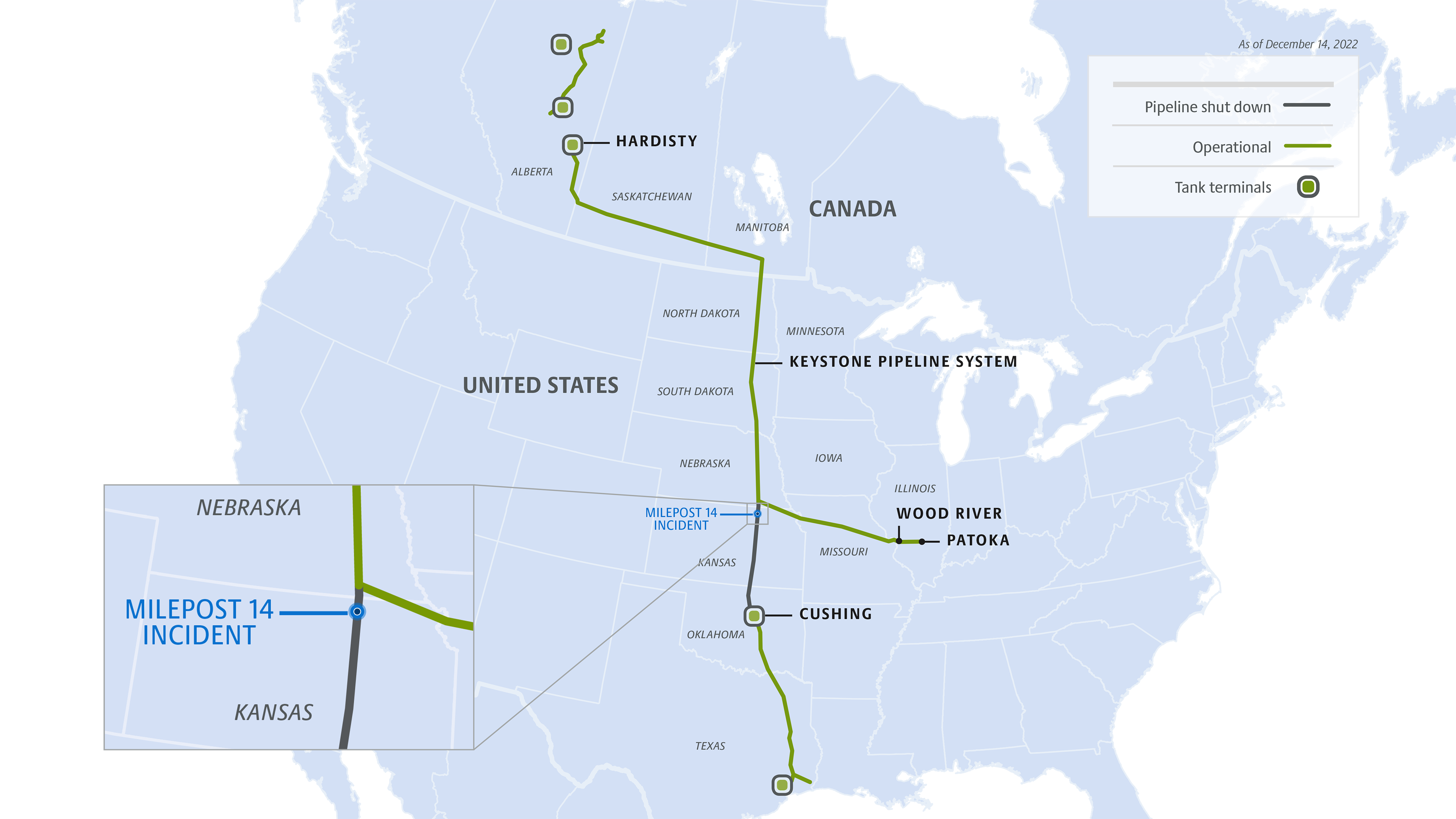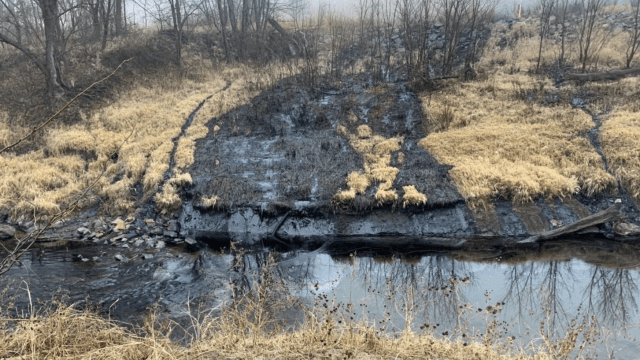The Keystone Pipeline spilled hundreds of thousands of gallons of tar sands oil into a creek in northern Kansas earlier this month. TC Energy, which operates the pipeline, says it has recovered a small amount of that oil, but experts say the full cleanup will take a long time.
On December 7, 14,000 barrels of oil spilled from the Keystone Pipeline into Mill Creek in Kansas. But it didn’t just spill any oil — it spilled diluted bitumen, the Environmental Protection Agency said last week. Bitumen from tar sands is dense, and so it is mixed with other products like lighter oils to create diluted bitumen, which can easily move through a pipeline. But when a spill happens, it’s a cleanup nightmare, because diluted bitumen sinks in water rather than floating on the surface.
Photos of the spill show that there’s a lot to clean up. Oil has blackened the side of a hill and the banks of the creek. “It’s nasty,” Joshua Alexrod, a senior advocate at the Natural Resources Defence Council, told Earther.
Alexrod said that, at first, diluted bitumen will float on the surface of the water like other oils do. During this phase, traditional cleanup methods like skimming the oil off the top of the water will still work. But that doesn’t last long. “The components start to separate fairly quickly,” Axelrod said. “The lighter liquids that are added evaporate off into the air, and what’s left behind is that bitumen, which is tar sands oil, and it starts to sink.”
He referenced the destructive 2010 Kalamazoo, Michigan oil spill, in which about 42,000 barrels (6,677,463 l) of diluted bitumen spilled into a tributary of the Kalamazoo River. It took four years and over a billion dollars to clean up, making it the worst tar sands oil spill in U.S. history, Grist reported. The oil spread almost 64 km downriver. It coated animals with oil and contaminated more than 4,400 acres of land near the river, Inside Climate News reported in 2016.
Thus far, TC Energy has not given an estimate for how long it will take to remove most of the oil from the creek. But in a 10th oil spill statement dated December 19, TC Energy said that, as of December 18, it had recovered “an estimated 7,233 barrels of oil” from the affected creek. “The affected segment of the Keystone Pipeline System remains safely isolated as investigation, recovery, repair and remediation continue to advance. This segment will not be restarted until it is safe to do so,” the statement said.

Workers from the Environmental Protection Agency were on the scene that same week to oversee the cleanup efforts. They have recovered oil from the creek, have removed “oil-impacted soil and vegetation,” and have conducted water and air monitoring, the EPA said in a statement.
Axelrod said he hopes that TC Energy and others involved in the cleanup get as much oil out of the creek as possible before the cleanup becomes more complicated. “I think those people who use that water would want to see… at least five to 10 years of monitoring to see how much oil is left and whether it’s getting into their water supplies,” Axelrod said.
Zack Pistoria, Kansas lobbyist for the local Sierra Club chapter, said that this oil spill is a great example as to why we need to quickly phase out pipelines. He says that he and other environmental activists are frustrated that spills are often connected to cracks introduced during the construction of the pipeline, and companies like TC Energy can’t predict when the next spill will happen. “Is it worth the risk?” he told Earther. “It’s always, ‘well, this [spill] is a possibility,’ but when that happens, it’s worse than you could ever expect.”
Pistoria is right: This is far from the first time the Keystone Pipeline system has spewed oil into the environment. In November 2017, a Keystone Pipeline in Amherst, South Dakota spilled about 794,936 l. Inspections found that the spill was caused by a crack created during the pipeline’s construction.
